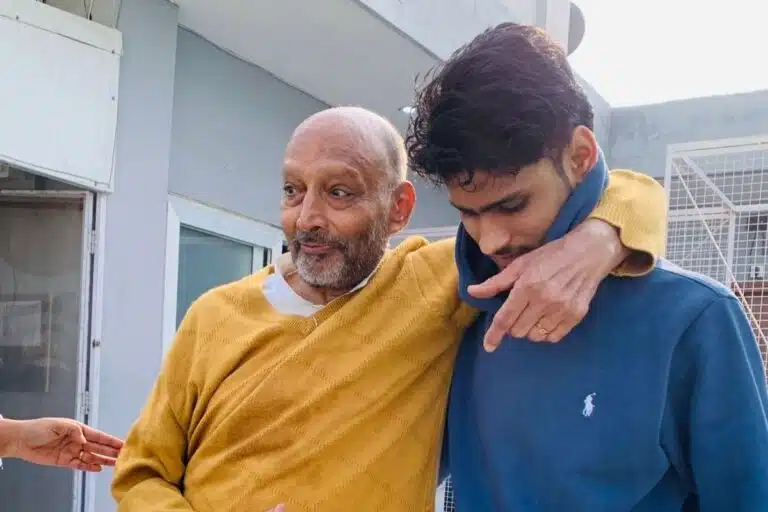Quick Summary of the article:
- India’s senior population is rapidly growing, driving a surge in demand for high-quality senior living options.
- Senior Living homes are emerging as preferred choices for seniors seeking independent, comfortable living with care.
- Senior living focuses on Holistic well-being and hence preferred choice among seniors.
- Seniors are looking forward for Community living, initiatives that foster social connection and engagement for residents.
- Government and private sector investments in infrastructure and care services are supporting the growth of the senior living market.
Gone are the days of traditional retirement homes; today, we are witnessing the rise of luxurious, innovative, and holistic senior living communities.
India is transforming in senior living, with luxury retirement homes setting new standards in comfort, care, and lifestyle.
These residences are not just about elegant rooms and good interiors; they are about providing an overall living experience tailored to the unique needs of seniors.
From AI-powered companions and sustainable practices to cognitive health programs, the future of senior living in India is exciting and transformative.
In India, we are redefining luxury retirement by integrating state-of-the-art health monitoring systems, eco-friendly building designs, and comprehensive wellness programs.
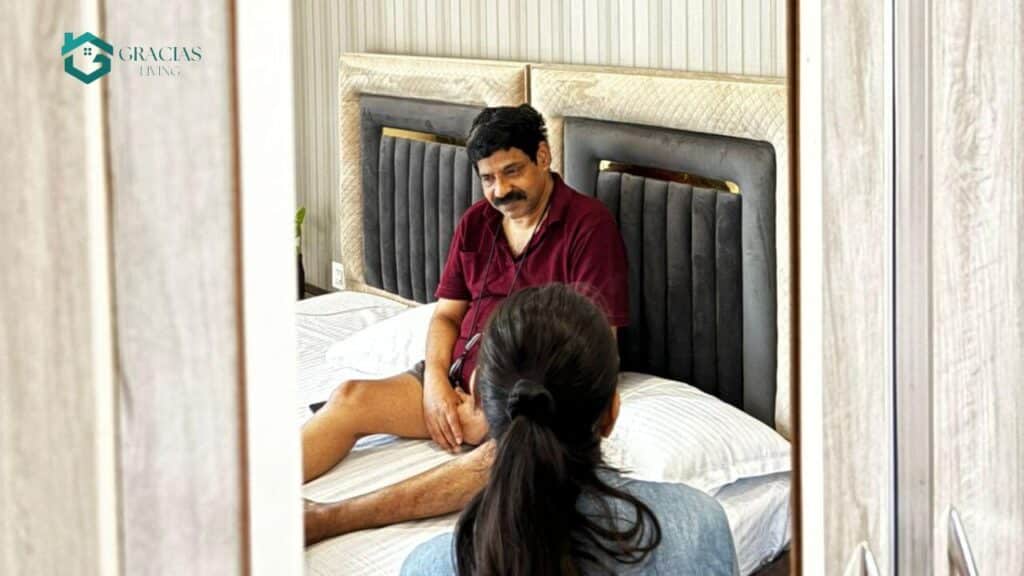
Design and Safety Features in Modern Senior Living
When we imagine senior living facilities today, we are no longer envisioning a facility where our loved ones can live; this is a setting that is created with their interest in mind. It is about making comfort and key safety features intertwine.
Consider things that do not seem important but go a long way: slip-resistant flooring, grab rails in the bathroom, and extra-wide doors that are wheelchair friendly. These considerate details make it possible for the residents to move around their homes with certainty. We also have cool technology that is being used, such as smart home systems that can notify staff of an emergency and telehealth services that make it simple to consult with doctors even in their rooms. It is about making an environment where independence and security go hand in hand.
Types of Senior Care Models: Independent, Assisted & Skilled Nursing
The three main types of senior care are all geared towards different needs, but navigating the world of senior care might feel a little overwhelming at first.
Independent Living
This system best suits the active seniors who will not require assistance. They want a no-nonsense lifestyle where they can access social/ entertainment as well as amenities. They do not require everyday health care but enjoy the safety and companionship that it entails. It is all about shrinking the responsibilities and bigger on fun.
Assisted Living
In assisted living, residents are provided with that little bit of assistance concerning everyday activities like dressing, bathing, and managing medication. The staff are available to help at all times, but won’t take away independence. It is the perfect medium for someone who is in need of little assistance to flourish.
Skilled Nursing
These are the seniors who need more intensive medical services that are often around the clock. It is like a hospital environment, but more accommodating with a long-term aspect. These centers are operated by registered nurses and professional personnel who can deal with complex medical conditions.
The Growing Demand for Senior Living Homes in India
1. Changing Demographics
India’s senior population is multiplying, and with increased life expectancy, there’s a greater demand for high-quality living arrangements that cater to the needs and aspirations of the elderly.
According to the United Nations, the number of elderly individuals (aged 60 and above) in India is expected to grow from 139 million in 2021 to 319 million by 2050.
This significant increase underscores the need for more senior living options. Additionally, a report by the Ministry of Statistics and Programme Implementation projects that by 2050, the elderly will constitute nearly 20% of India’s total population.
| Year | Elderly Population (60+) | Percentage of Total Population |
| 2021 | 139 million | 10.1% |
| 2050 | 319 million | 19.5% |
2. Increasing Longevity
Life expectancy in India has been steadily rising, reaching approximately 70 years in 2021, and it is projected to increase further in the coming decades.
With longer lifespans, there is a growing demand for long-term care solutions that ensure a high quality of life for seniors.
The World Bank reports that India’s life expectancy at birth is expected to rise to 73 years by 2030, further driving the need for sustainable and supportive living environments for the elderly.
| Year | Life Expectancy at Birth |
| 2021 | 70 years |
| 2030 | 73 years (projected) |
3. Rising Affluence
India’s economic growth has led to increased disposable incomes among the elderly population.
The number of affluent seniors with the financial capability to invest in luxury retirement homes is on the rise. This demographic shift is driving the demand for premium senior living facilities that offer a blend of comfort, care, and lifestyle amenities.
A report by the Boston Consulting Group (BCG) estimates that the wealth of India’s senior population will triple by 2030, creating significant opportunities for luxury retirement communities.
Furthermore, the report suggests that the spending power of the elderly is expected to grow at a CAGR of 15-17% over the next decade.
| Year | Wealth of the Elderly Population | Spending Power Growth Rate (CAGR) |
| 2021 | $100 billion | 15-17% |
| 2030 | $300 billion (projected) | – |
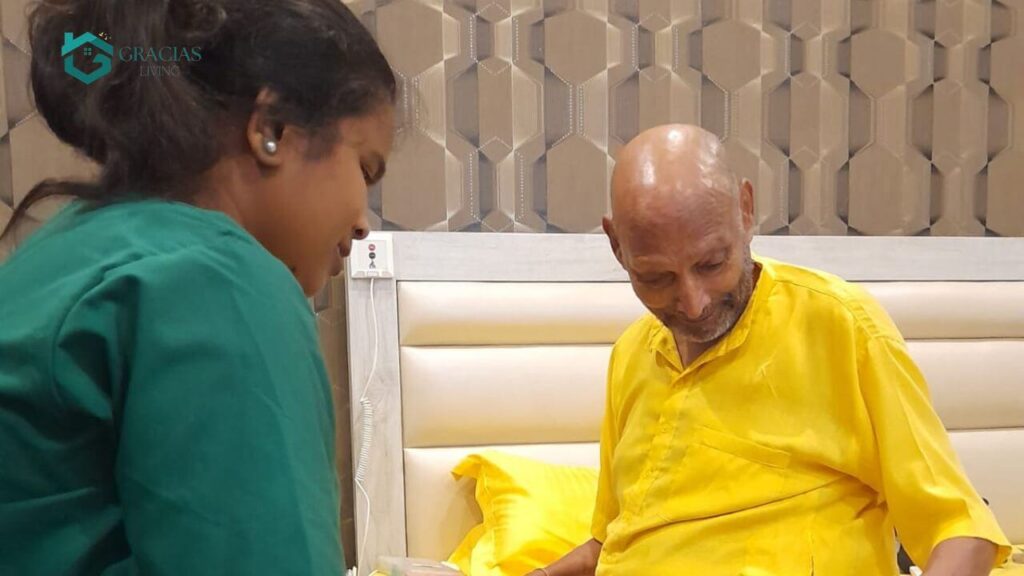
4. Changing Family Dynamics
Traditional joint family structures are evolving, with more nuclear families and working professionals living in urban areas.
As a result, many seniors are seeking independent living arrangements that provide both community support and professional care. Luxury retirement homes are well-positioned to meet this need by offering a secure and engaging environment.
According to a study by the India Ageing Report 2021, around 20% of the elderly in urban areas prefer living independently, which is a growing trend.
This shift is further supported by data from the National Sample Survey Office (NSSO), indicating a rise in the number of elderly households living alone or with only a spouse.
| Household Type | Percentage of Elderly Households (Urban Areas) |
| Living Independently | 20% |
| Living with Spouse | Increasing |
Urban vs Semi-Urban Opportunities in Senior Living
The senior community situation in India is changing and how it is taking form is interesting to observe across geographies. An opportunity is really a dependent part of a location.
In large cities the demand is soaring. I know the same is true and I see this myself as more and more of my friends in big cities, such as Bengaluru and Delhi are seeking solutions to their parents. The modern nuclear families and their hectic lifestyles have seen these new communities provide a realistic and proud way of living. In addition to this, an increase in disposable income will result in families demanding better quality services and amenities, which are meant to fulfill their more modern lifestyles.
But let’s not overlook the semi-urban potential. Tier-II and Tier-III cities are quickly gaining traction. Property and living costs are lower, making these communities more accessible. There’s also a strong sense of community and culture that makes many seniors feel right at home. It’s a compelling opportunity for those who want a quality lifestyle that’s also affordable.
And yet we must not ignore the semi-urban potential. Tier-II and Tier-III cities are fast gaining momentum. Prices of property and living expenses are low, so these communities are more affordable. There are also great community and culture that many seniors feel at home. It presents an outstanding chance to people who are willing to have a decent lifestyle at an affordable cost.
Growth of the Senior Living Market
The senior living market in India is projected to grow at a compound annual growth rate (CAGR) of 15-20% over the next decade.
This growth is driven by increasing awareness about the benefits of senior living communities, the rising number of elderly individuals, and the entry of both domestic and international players in the market.
The Economic Times reports that the senior living market in India is expected to reach $10 billion by 2030, highlighting its vast potential.
The growth is also fueled by increased investment from real estate developers and healthcare providers looking to tap into this emerging market.
| Metric | Current Value | Projected Value (2030) |
| Senior Living Market Size | $2 billion | $10 billion |
| Market Growth Rate (CAGR) | 15-20% |
1. Technological Advancements
The integration of technology in senior living is transforming the way care is delivered. From telemedicine and smart home systems to wearable health devices and AI-driven health monitoring, technology is enhancing the quality of life for seniors.
Future retirement homes will increasingly adopt these innovations to provide better care and improve overall resident well-being.
A report by Nasscom predicts that the Indian health tech market will grow to $21 billion by 2025, with a significant portion dedicated to elder care solutions.
Technologies like IoT-enabled devices, remote monitoring systems, and digital health platforms will play a crucial role in the future of senior living.
| Year | Health Tech Market Size (India) |
| 2021 | $10 billion |
| 2025 | $21 billion (projected) |
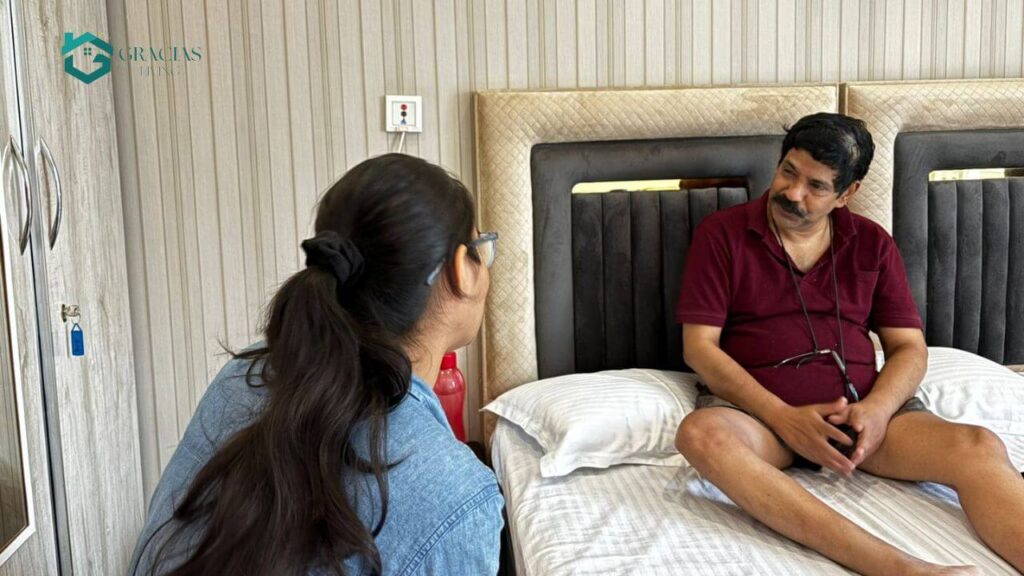
2. Focus on Holistic Well-being
The future of senior living will emphasize holistic well-being, encompassing physical, mental, emotional, and social health.
Wellness programs, fitness centers, mental health support, and social engagement activities will become integral components of senior living communities.
Personalized care plans and proactive health management will ensure that residents lead fulfilling and healthy lives.
According to a survey by McKinsey & Company, 70% of seniors prioritize wellness and holistic care when choosing a retirement home, reflecting a growing trend towards comprehensive well-being.
| Survey Metric | Percentage of Respondents |
| Seniors Prioritizing Wellness | 70% |
| Preference for Holistic Care | High |
3. Community Integration
Future senior living communities will foster greater integration with the broader community. This includes partnerships with local healthcare providers, cultural institutions, and educational organizations.
Intergenerational programs and community engagement initiatives will help residents stay connected and actively involved in society. A report by the International Longevity Centre India (ILC-I) highlights the importance of community-based support systems in enhancing the quality of life for seniors.
Collaborations with local NGOs, schools, and volunteer organizations will play a key role in fostering a sense of belonging and purpose among residents.
| Initiative Type | Examples |
| Partnerships | Local healthcare providers, NGOs |
| Intergenerational Programs | Collaborations with schools |
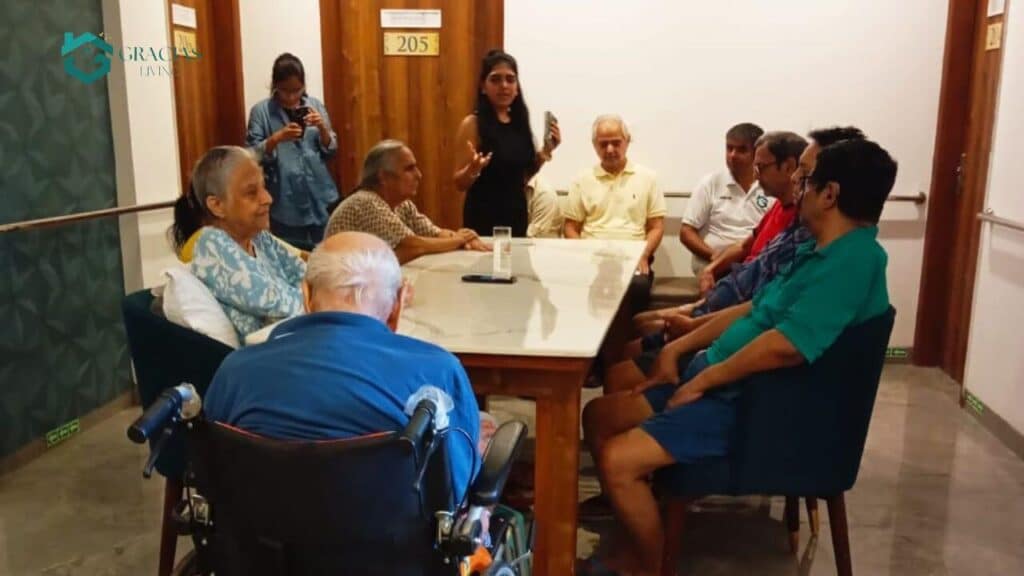
4. Investment in Infrastructure
The Indian government and private sector are increasingly investing in the infrastructure needed to support senior living.
Policies and regulations are being developed to promote the growth of the sector, ensuring that senior living communities meet high standards of care and safety.
Improved infrastructure will make it easier to develop and maintain high-quality retirement homes across the country.
The Ministry of Social Justice and Empowerment has launched several initiatives aimed at improving elderly care, including the National Action Plan for Senior Citizens (NAPSrC), which focuses on enhancing the infrastructure and services available to seniors.
| Initiative | Focus Area |
| National Action Plan for Senior Citizens | Enhancing elderly care |
5. Personalized and Specialized Care
As the senior living sector matures, there will be a growing emphasis on personalized and specialized care.
This includes services tailored to individuals with specific health conditions, such as Alzheimer’s and Parkinson’s disease. Memory care units, rehabilitation centers, and palliative care services will become more prevalent, ensuring that all residents receive the care they need.
The World Health Organization (WHO) projects that the prevalence of dementia in India will double by 2030, underscoring the need for specialized memory care services in retirement homes.
| Health Condition | Prevalence (2021) | Projected Prevalence (2030) |
| Dementia | 4 million | 8 million |
Conclusion
The future of senior living in India holds immense promise, driven by innovation, compassion, and a commitment to enhancing the quality of life for our elderly population.
At Gracias Living, we are dedicated to pioneering these advancements, ensuring that each resident experiences not just care, but a vibrant and fulfilling lifestyle. As we continue to evolve with cutting-edge technologies, sustainable practices, and personalized care approaches, we invite you to join us on this journey.
Whether you or your loved ones are looking for a place to call home in their golden years, Gracias Living stands ready to provide the highest standards of comfort, community, and care.
Contact us today to learn more about how we can help you embrace the future of senior living with confidence and peace of mind.
Frequently Asked Questions
1. Are old-age homes increasing in India?
Yes, definitely. Its idea has revolutionized the old-age homes to a professional and contemporary living space. The figure is increasing to match the older people and evolving family units.
2. What government initiatives support senior living in India?
Various welfare schemes and policies implemented by the government with the older people in mind include the National Programme for the Health Care of the Elderly (NPHCE) and some pension schemes. Such initiatives are indications of the fact that senior welfare is becoming an issue of priority.
3. How can families choose the right senior living home?
That is a large one indeed It is important to pay attention to the requirements of the senior, the place, the care offered, and cost. A visit to the facility and a conversation with the staff, and a request to provide a detailed plan of care is one of the things I would recommend to everyone.
4. What are the future trends in senior living design and infrastructure?
There is a migration to comprehensive wellness recognized Increased wellness regimes, built-in healthcare and smart technology are likely to be incorporated in future communities to make them safer and convenient. It is all about building a support ecosystem.
5. How is senior living different from assisted living in India?
Senior living is a general term that entails the types that we discussed, including independent living, assisted, and skilled nursing. Assisted living is a variant of a senior-living community where the inhabitants are provided with assistance in everyday tasks. Therefore, assisted living is a part of senior living.
We are all in this together, trying to figure out how to best help those that we love. What you can do now, most of all, is initiate the dialogue. Discuss with your family. Look at the alternatives Nor must you be dismayed to seek help on the road. It is worth the peace and enjoyment of your loved one.




